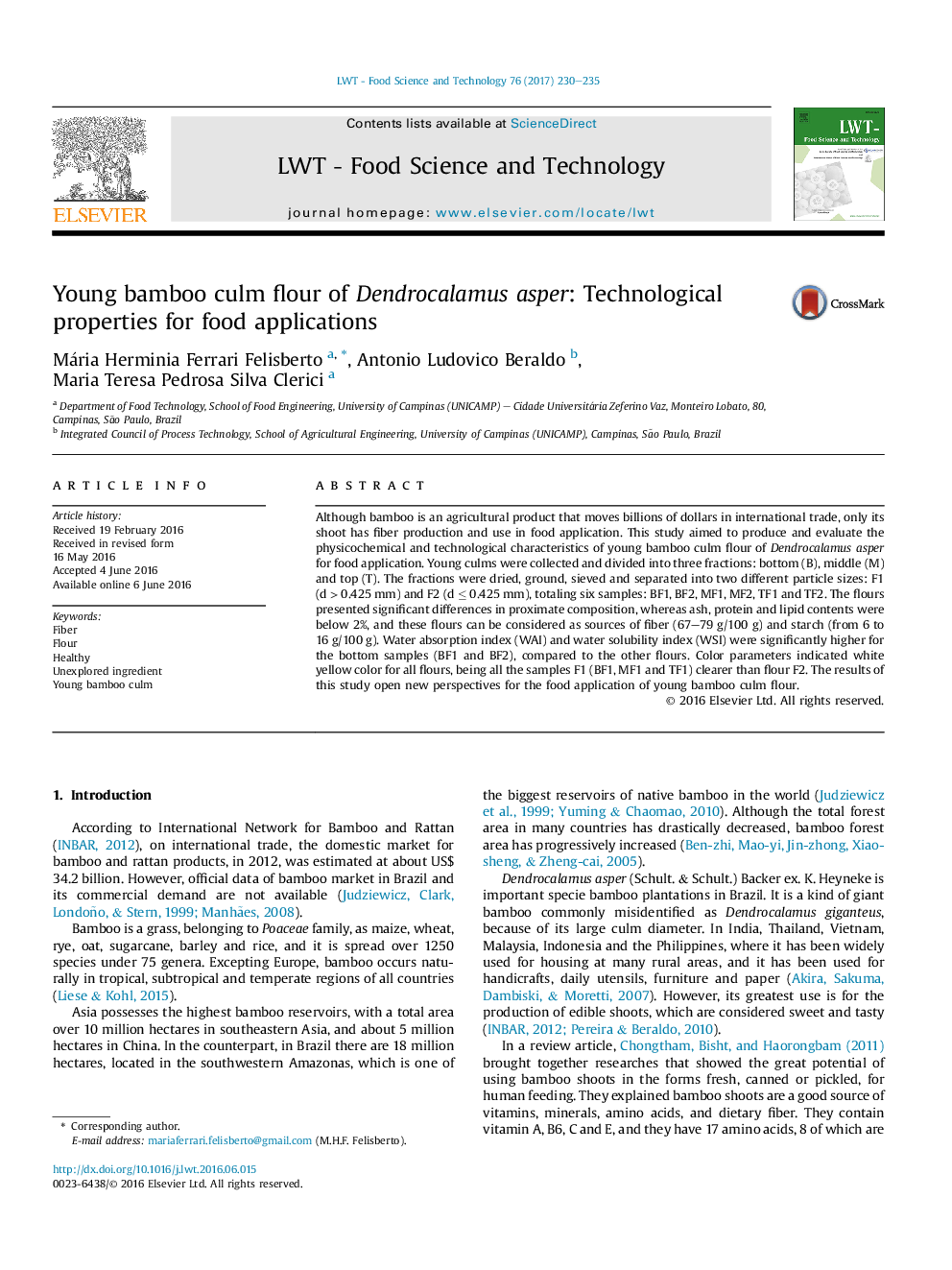| Article ID | Journal | Published Year | Pages | File Type |
|---|---|---|---|---|
| 5769114 | LWT - Food Science and Technology | 2017 | 6 Pages |
â¢Young bamboo culm flour may be an option for bamboo clumps sustainable management.â¢Bamboo culm flour presents similar technological properties to other fiber sources.â¢Obtaining the bamboo culm flour is more profitable than the bamboo shoot flour.â¢Dietary fiber and starch can be extracted from the young bamboo culm.
Although bamboo is an agricultural product that moves billions of dollars in international trade, only its shoot has fiber production and use in food application. This study aimed to produce and evaluate the physicochemical and technological characteristics of young bamboo culm flour of Dendrocalamus asper for food application. Young culms were collected and divided into three fractions: bottom (B), middle (M) and top (T). The fractions were dried, ground, sieved and separated into two different particle sizes: F1 (d > 0.425 mm) and F2 (d â¤Â 0.425 mm), totaling six samples: BF1, BF2, MF1, MF2, TF1 and TF2. The flours presented significant differences in proximate composition, whereas ash, protein and lipid contents were below 2%, and these flours can be considered as sources of fiber (67-79 g/100 g) and starch (from 6 to 16 g/100 g). Water absorption index (WAI) and water solubility index (WSI) were significantly higher for the bottom samples (BF1 and BF2), compared to the other flours. Color parameters indicated white yellow color for all flours, being all the samples F1 (BF1, MF1 and TF1) clearer than flour F2. The results of this study open new perspectives for the food application of young bamboo culm flour.
